Cover
Title Page
Copyright Page
Contents
Preface
Acknowledgments
Background and Preview
1. The Filtering Problem
2. Linear Optimum Filters
3. Adaptive Filters
4. Linear Filter Structures
5. Approaches to the Development of Linear Adaptive Filters
6. Adaptive Beamforming
7. Four Classes of Applications
8. Historical Notes
Chapter 1 Stochastic Processes and Models
1.1 Partial Characterization of a Discrete-Time Stochastic Process
1.2 Mean Ergodic Theorem
1.3 Correlation Matrix
1.4 Correlation Matrix of Sine Wave Plus Noise
1.5 Stochastic Models
1.6 Wold Decomposition
1.7 Asymptotic Stationarity of an Autoregressive Process
1.8 Yule–Walker Equations
1.9 Computer Experiment: Autoregressive Process of Order Two
1.10 Selecting the Model Order
1.11 Complex Gaussian Processes
1.12 Power Spectral Density
1.13 Properties of Power Spectral Density
1.14 Transmission of a Stationary Process Through a Linear Filter
1.15 Cramér Spectral Representation for a Stationary Process
1.16 Power Spectrum Estimation
1.17 Other Statistical Characteristics of a Stochastic Process
1.18 Polyspectra
1.19 Spectral-Correlation Density
1.20 Summary and Discussion
Problems
Chapter 2 Wiener Filters
2.1 Linear Optimum Filtering: Statement of the Problem
2.2 Principle of Orthogonality
2.3 Minimum Mean-Square Error
2.4 Wiener–Hopf Equations
2.5 Error-Performance Surface
2.6 Multiple Linear Regression Model
2.7 Example
2.8 Linearly Constrained Minimum-Variance Filter
2.9 Generalized Sidelobe Cancellers
2.10 Summary and Discussion
Problems
Chapter 3 Linear Prediction
3.1 Forward Linear Prediction
3.2 Backward Linear Prediction
3.3 Levinson–Durbin Algorithm
3.4 Properties of Prediction-Error Filters
3.5 Schur–Cohn Test
3.6 Autoregressive Modeling of a Stationary Stochastic Process
3.7 Cholesky Factorization
3.8 Lattice Predictors
3.9 All-Pole, All-Pass Lattice Filter
3.10 Joint-Process Estimation
3.11 Predictive Modeling of Speech
3.12 Summary and Discussion
Problems
Chapter 4 Method of Steepest Descent
4.1 Basic Idea of the Steepest-Descent Algorithm
4.2 The Steepest-Descent Algorithm Applied to the Wiener Filter
4.3 Stability of the Steepest-Descent Algorithm
4.4 Example
4.5 The Steepest-Descent Algorithm Viewed as a Deterministic Search Method
4.6 Virtue and Limitation of the Steepest-Descent Algorithm
4.7 Summary and Discussion
Problems
Chapter 5 Method of Stochastic Gradient Descent
5.1 Principles of Stochastic Gradient Descent
5.2 Application 1: Least-Mean-Square (LMS) Algorithm
5.3 Application 2: Gradient-Adaptive Lattice Filtering Algorithm
5.4 Other Applications of Stochastic Gradient Descent
5.5 Summary and Discussion
Problems
Chapter 6 The Least-Mean-Square (LMS) Algorithm
6.1 Signal-Flow Graph
6.2 Optimality Considerations
6.3 Applications
6.4 Statistical Learning Theory
6.5 Transient Behavior and Convergence Considerations
6.6 Efficiency
6.7 Computer Experiment on Adaptive Prediction
6.8 Computer Experiment on Adaptive Equalization
6.9 Computer Experiment on a Minimum-Variance Distortionless-Response Beamformer
6.10 Summary and Discussion
Problems
Chapter 7 Normalized Least-Mean-Square (LMS) Algorithm and Its Generalization
7.1 Normalized LMS Algorithm: The Solution to a Constrained Optimization Problem
7.2 Stability of the Normalized LMS Algorithm
7.3 Step-Size Control for Acoustic Echo Cancellation
7.4 Geometric Considerations Pertaining to the Convergence Process for Real-Valued Data
7.5 Affine Projection Adaptive Filters
7.6 Summary and Discussion
Problems
Chapter 8 Block-Adaptive Filters
8.1 Block-Adaptive Filters: Basic Ideas
8.2 Fast Block LMS Algorithm
8.3 Unconstrained Frequency-Domain Adaptive Filters
8.4 Self-Orthogonalizing Adaptive Filters
8.5 Computer Experiment on Adaptive Equalization
8.6 Subband Adaptive Filters
8.7 Summary and Discussion
Problems
Chapter 9 Method of Least-Squares
9.1 Statement of the Linear Least-Squares Estimation Problem
9.2 Data Windowing
9.3 Principle of Orthogonality Revisited
9.4 Minimum Sum of Error Squares
9.5 Normal Equations and Linear Least-Squares Filters
9.6 Time-Average Correlation Matrix Φ
9.7 Reformulation of the Normal Equations in Terms of Data Matrices
9.8 Properties of Least-Squares Estimates
9.9 Minimum-Variance Distortionless Response (MVDR) Spectrum Estimation
9.10 Regularized MVDR Beamforming
9.11 Singular-Value Decomposition
9.12 Pseudoinverse
9.13 Interpretation of Singular Values and Singular Vectors
9.14 Minimum-Norm Solution to the Linear Least-Squares Problem
9.15 Normalized LMS Algorithm Viewed as the Minimum-Norm Solution to an Underdetermined Least-Squares Estimation Problem
9.16 Summary and Discussion
Problems
Chapter 10 The Recursive Least-Squares (RLS) Algorithm
10.1 Some Preliminaries
10.2 The Matrix Inversion Lemma
10.3 The Exponentially Weighted RLS Algorithm
10.4 Selection of the Regularization Parameter
10.5 Updated Recursion for the Sum of Weighted Error Squares
10.6 Example: Single-Weight Adaptive Noise Canceller
10.7 Statistical Learning Theory
10.8 Efficiency
10.9 Computer Experiment on Adaptive Equalization
10.10 Summary and Discussion
Problems
Chapter 11 Robustness
11.1 Robustness, Adaptation, and Disturbances
11.2 Robustness: Preliminary Considerations Rooted in H[Sup(∞)] Optimization
11.3 Robustness of the LMS Algorithm
11.4 Robustness of the RLS Algorithm
11.5 Comparative Evaluations of the LMS and RLS Algorithms from the Perspective of Robustness
11.6 Risk-Sensitive Optimality
11.7 Trade-Offs Between Robustness and Efficiency
11.8 Summary and Discussion
Problems
Chapter 12 Finite-Precision Effects
12.1 Quantization Errors
12.2 Least-Mean-Square (LMS) Algorithm
12.3 Recursive Least-Squares (RLS) Algorithm
12.4 Summary and Discussion
Problems
Chapter 13 Adaptation in Nonstationary Environments
13.1 Causes and Consequences of Nonstationarity
13.2 The System Identification Problem
13.3 Degree of Nonstationarity
13.4 Criteria for Tracking Assessment
13.5 Tracking Performance of the LMS Algorithm
13.6 Tracking Performance of the RLS Algorithm
13.7 Comparison of the Tracking Performance of LMS and RLS Algorithms
13.8 Tuning of Adaptation Parameters
13.9 Incremental Delta-Bar-Delta (IDBD) Algorithm
13.10 Autostep Method
13.11 Computer Experiment: Mixture of Stationary and Nonstationary Environmental Data
13.12 Summary and Discussion
Problems
Chapter 14 Kalman Filters
14.1 Recursive Minimum Mean-Square Estimation for Scalar Random Variables
14.2 Statement of the Kalman Filtering Problem
14.3 The Innovations Process
14.4 Estimation of the State Using the Innovations Process
14.5 Filtering
14.6 Initial Conditions
14.7 Summary of the Kalman Filter
14.8 Optimality Criteria for Kalman Filtering
14.9 Kalman Filter as the Unifying Basis for RLS Algorithms
14.10 Covariance Filtering Algorithm
14.11 Information Filtering Algorithm
14.12 Summary and Discussion
Problems
Chapter 15 Square-Root Adaptive Filtering Algorithms
15.1 Square-Root Kalman Filters
15.2 Building Square-Root Adaptive Filters on the Two Kalman Filter Variants
15.3 QRD-RLS Algorithm
15.4 Adaptive Beamforming
15.5 Inverse QRD-RLS Algorithm
15.6 Finite-Precision Effects
15.7 Summary and Discussion
Problems
Chapter 16 Order-Recursive Adaptive Filtering Algorithm
16.1 Order-Recursive Adaptive Filters Using Least-Squares Estimation: An Overview
16.2 Adaptive Forward Linear Prediction
16.3 Adaptive Backward Linear Prediction
16.4 Conversion Factor
16.5 Least-Squares Lattice (LSL) Predictor
16.6 Angle-Normalized Estimation Errors
16.7 First-Order State-Space Models for Lattice Filtering
16.8 QR-Decomposition-Based Least-Squares Lattice (QRD-LSL) Filters
16.9 Fundamental Properties of the QRD-LSL Filter
16.10 Computer Experiment on Adaptive Equalization
16.11 Recursive (LSL) Filters Using A Posteriori Estimation Errors
16.12 Recursive LSL Filters Using A Priori Estimation Errors with Error Feedback
16.13 Relation Between Recursive LSL and RLS Algorithms
16.14 Finite-Precision Effects
16.15 Summary and Discussion
Problems
Chapter 17 Blind Deconvolution
17.1 Overview of Blind Deconvolution
17.2 Channel Identifiability Using Cyclostationary Statistics
17.3 Subspace Decomposition for Fractionally Spaced Blind Identification
17.4 Bussgang Algorithm for Blind Equalization
17.5 Extension of the Bussgang Algorithm to Complex Baseband Channels
17.6 Special Cases of the Bussgang Algorithm
17.7 Fractionally Spaced Bussgang Equalizers
17.8 Estimation of Unknown Probability Distribution Function of Signal Source
17.9 Summary and Discussion
Problems
Epilogue
1. Robustness, Efficiency, and Complexity
2. Kernel-Based Nonlinear Adaptive Filtering
Appendix A: Theory of Complex Variables
A.1 Cauchy–Riemann Equations
A.2 Cauchy’s Integral Formula
A.3 Laurent’s Series
A.4 Singularities and Residues
A.5 Cauchy’s Residue Theorem
A.6 Principle of the Argument
A.7 Inversion Integral for the z-Transform
A.8 Parseval’s Theorem
Appendix B: Wirtinger Calculus for Computing Complex Gradients
B.1 Wirtinger Calculus: Scalar Gradients
B.2 Generalized Wirtinger Calculus: Gradient Vectors
B.3 Another Approach to Compute Gradient Vectors
B.4 Expressions for the Partial Derivatives əf/əz and əf/əz*
Appendix C: Method of Lagrange Multipliers
C.1 Optimization Involving a Single Equality Constraint
C.2 Optimization Involving Multiple Equality Constraints
C.3 Optimum Beamformer
Appendix D: Estimation Theory
D.1 Likelihood Function
D.2 Cramér–Rao Inequality
D.3 Properties of Maximum-Likelihood Estimators
D.4 Conditional Mean Estimator
Appendix E: Eigenanalysis
E.1 The Eigenvalue Problem
E.2 Properties of Eigenvalues and Eigenvectors
E.3 Low-Rank Modeling
E.4 Eigenfilters
E.5 Eigenvalue Computations
Appendix F: Langevin Equation of Nonequilibrium Thermodynamics
F.1 Brownian Motion
F.2 Langevin Equation
Appendix G: Rotations and Reflections
G.1 Plane Rotations
G.2 Two-Sided Jacobi Algorithm
G.3 Cyclic Jacobi Algorithm
G.4 Householder Transformation
G.5 The QR Algorithm
Appendix H: Complex Wishart Distribution
H.1 Definition
H.2 The Chi-Square Distribution as a Special Case
H.3 Properties of the Complex Wishart Distribution
H.4 Expectation of the Inverse Correlation Matrix Ф[Sup(–1)](n)
Glossary
Text Conventions
Abbreviations
Principal Symbols
Bibliography
Suggested Reading
Index
A
B
C
D
E
F
G
H
I
J
K
L
M
N
O
P
Q
R
S
T
U
V
W
Y
Z
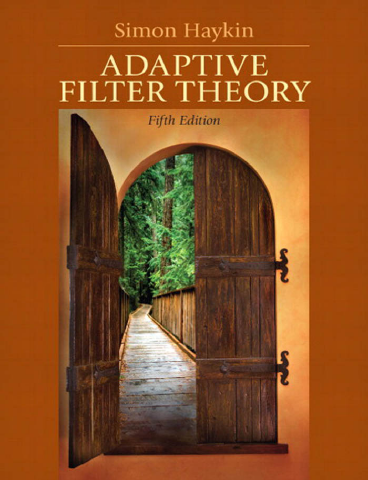
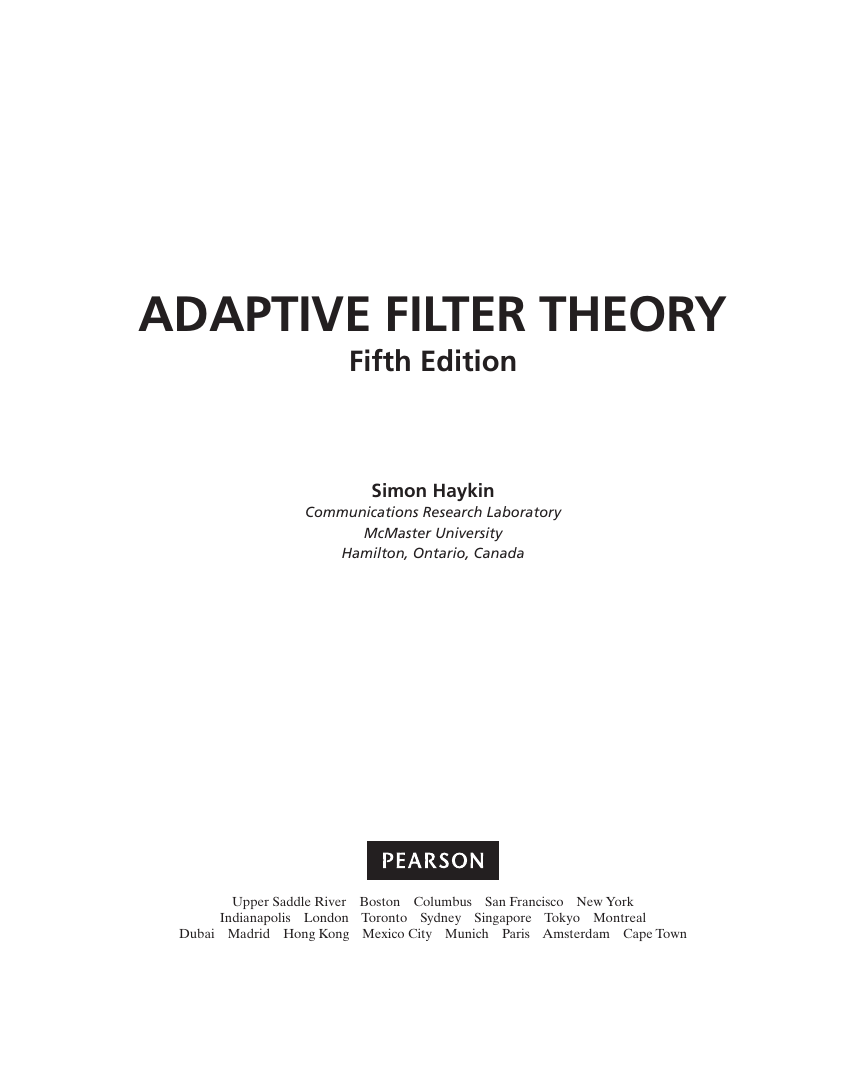
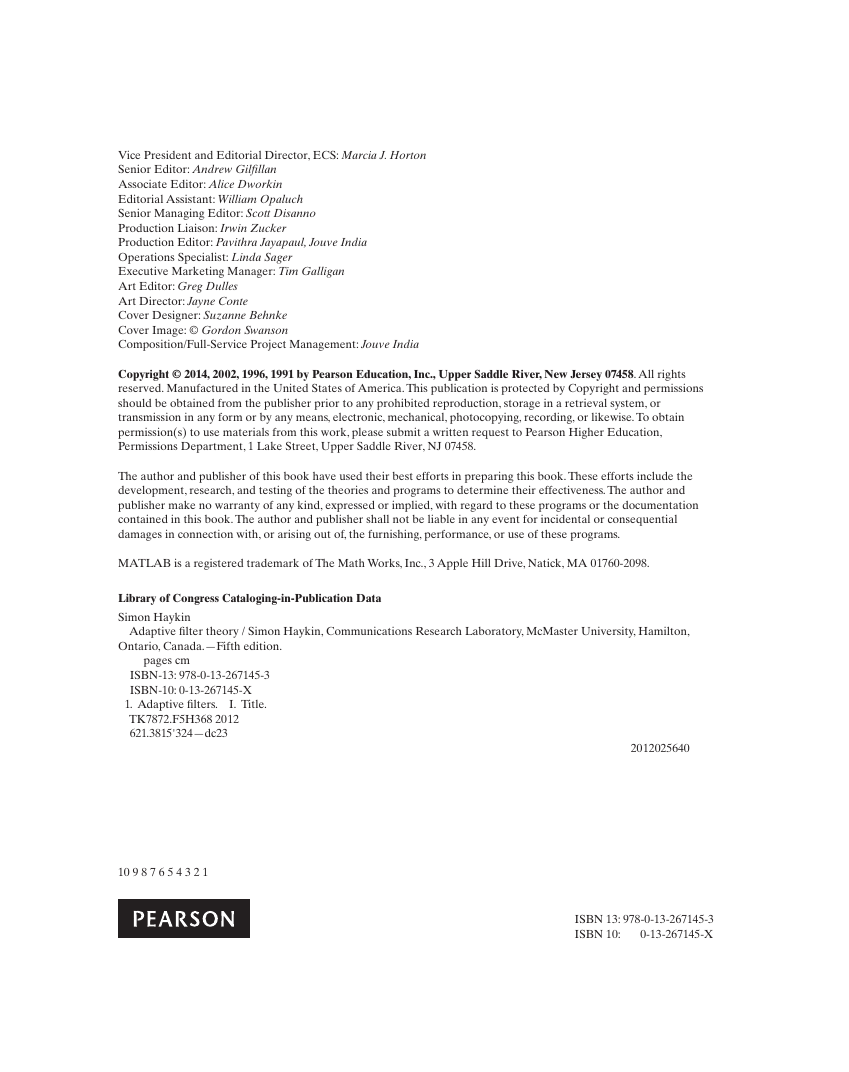
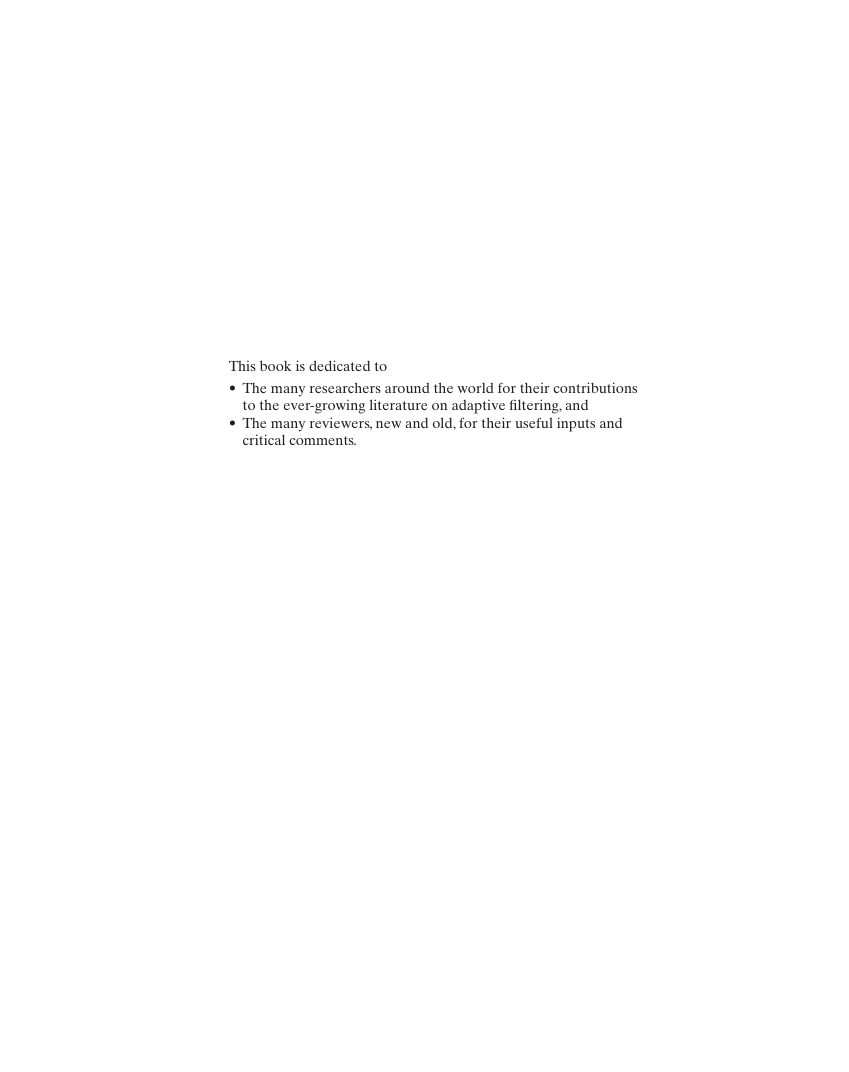
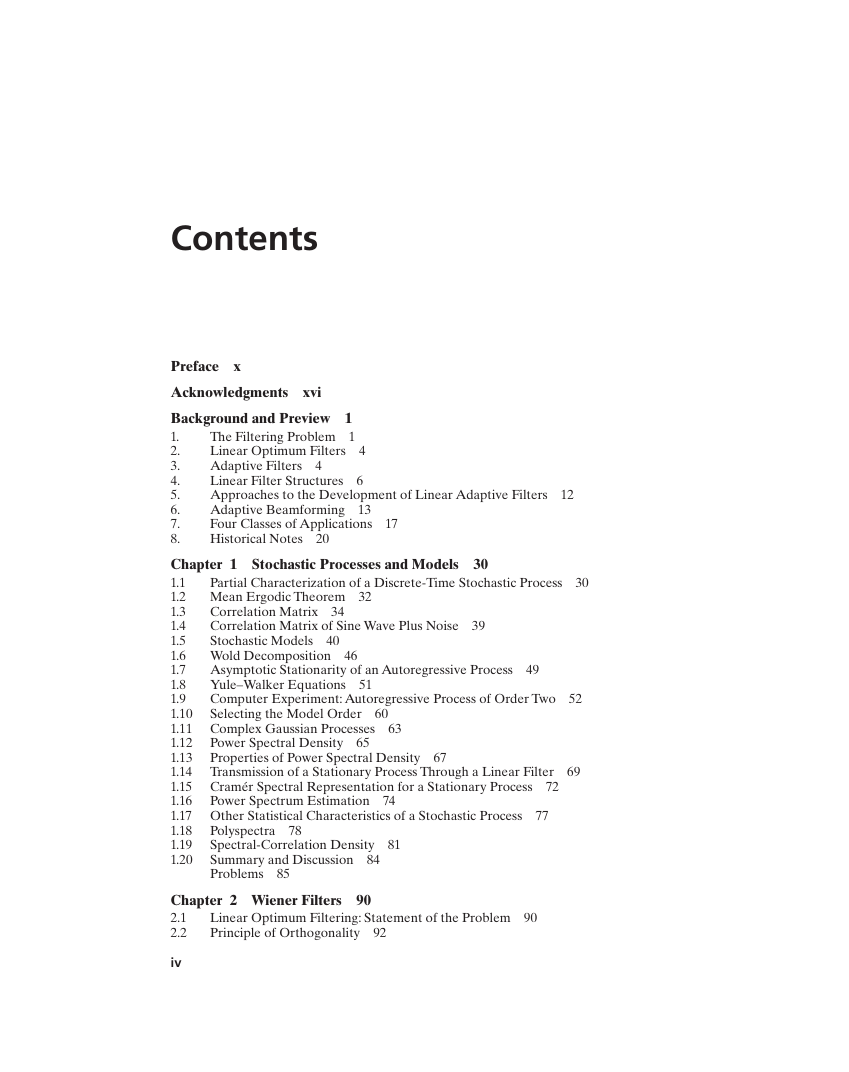
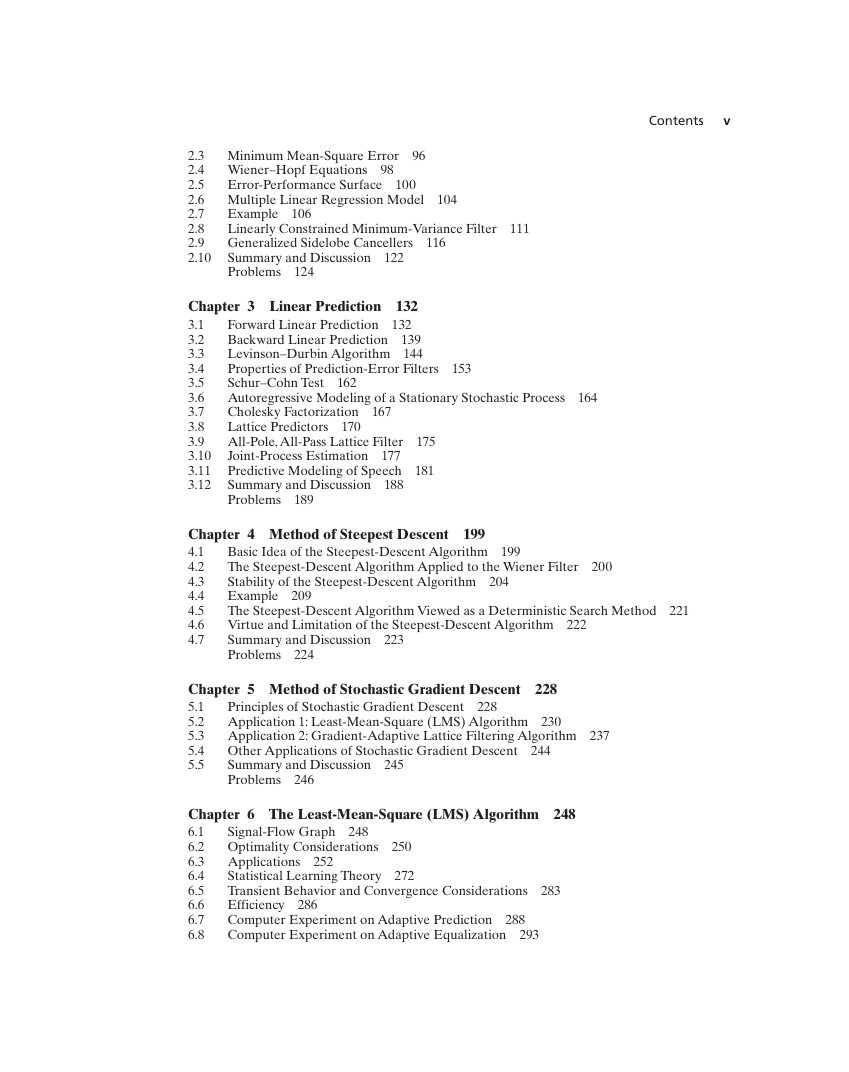
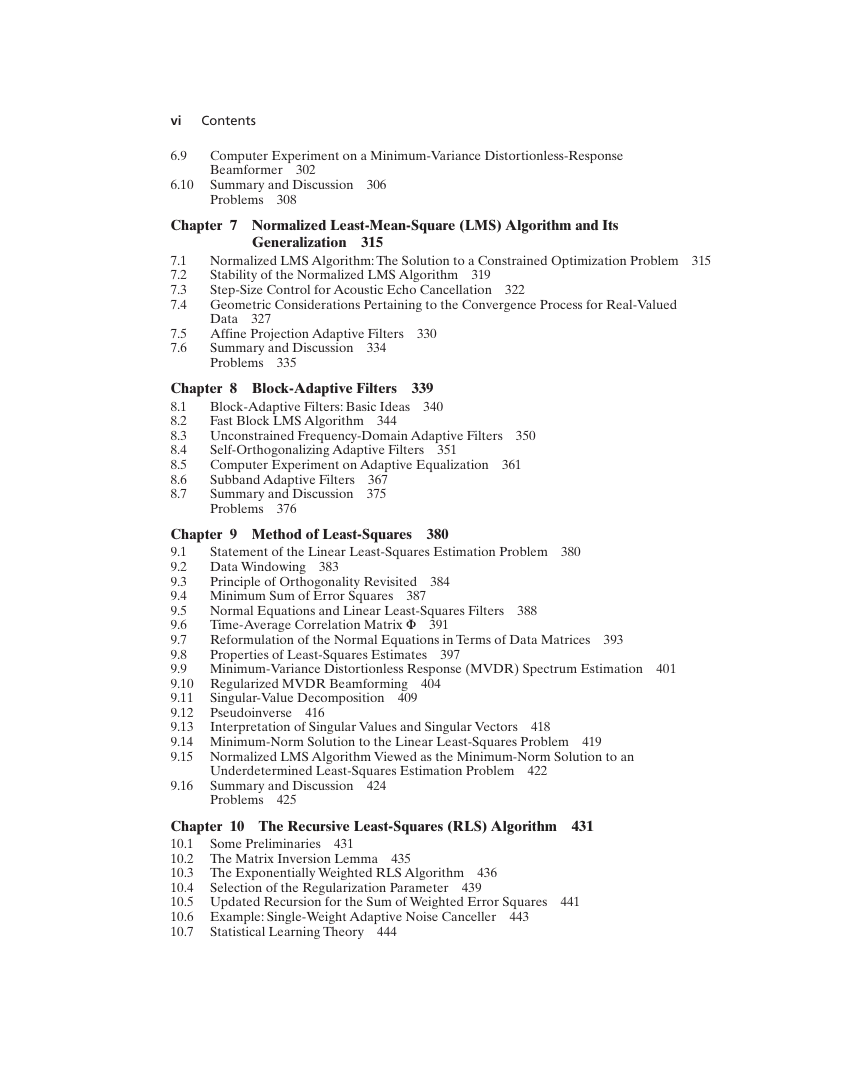
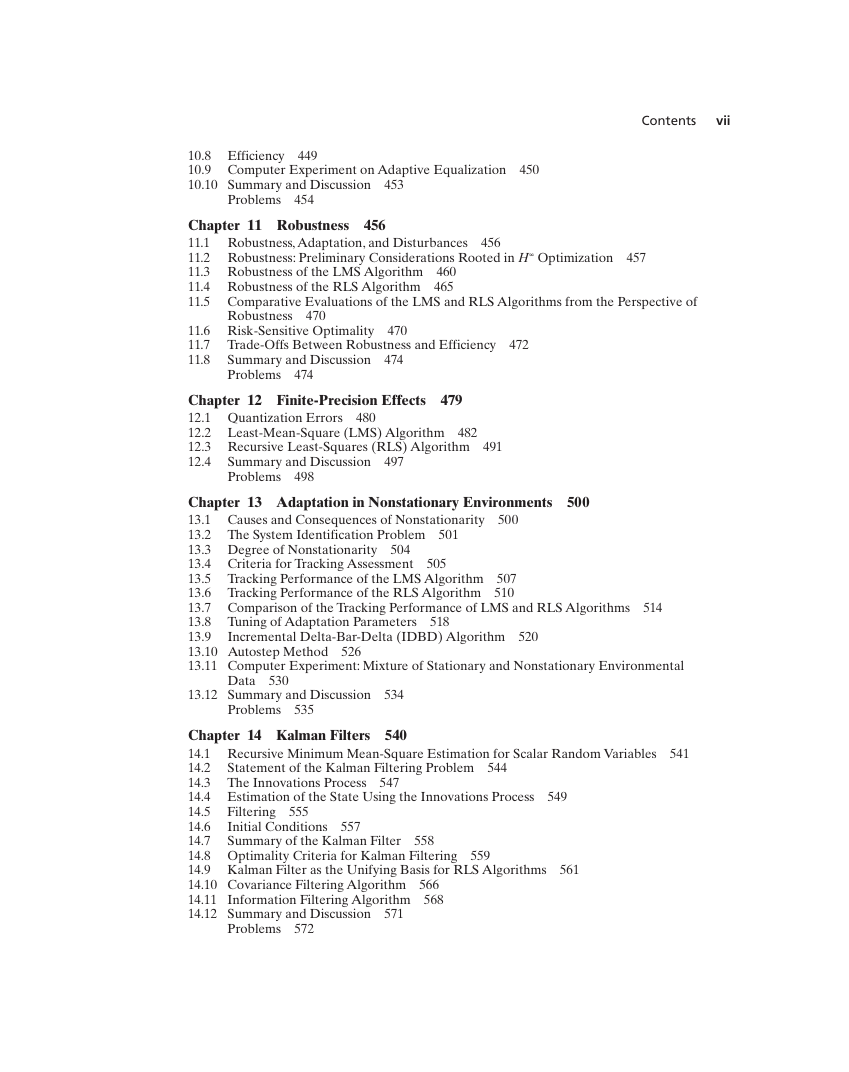








 2023年江西萍乡中考道德与法治真题及答案.doc
2023年江西萍乡中考道德与法治真题及答案.doc 2012年重庆南川中考生物真题及答案.doc
2012年重庆南川中考生物真题及答案.doc 2013年江西师范大学地理学综合及文艺理论基础考研真题.doc
2013年江西师范大学地理学综合及文艺理论基础考研真题.doc 2020年四川甘孜小升初语文真题及答案I卷.doc
2020年四川甘孜小升初语文真题及答案I卷.doc 2020年注册岩土工程师专业基础考试真题及答案.doc
2020年注册岩土工程师专业基础考试真题及答案.doc 2023-2024学年福建省厦门市九年级上学期数学月考试题及答案.doc
2023-2024学年福建省厦门市九年级上学期数学月考试题及答案.doc 2021-2022学年辽宁省沈阳市大东区九年级上学期语文期末试题及答案.doc
2021-2022学年辽宁省沈阳市大东区九年级上学期语文期末试题及答案.doc 2022-2023学年北京东城区初三第一学期物理期末试卷及答案.doc
2022-2023学年北京东城区初三第一学期物理期末试卷及答案.doc 2018上半年江西教师资格初中地理学科知识与教学能力真题及答案.doc
2018上半年江西教师资格初中地理学科知识与教学能力真题及答案.doc 2012年河北国家公务员申论考试真题及答案-省级.doc
2012年河北国家公务员申论考试真题及答案-省级.doc 2020-2021学年江苏省扬州市江都区邵樊片九年级上学期数学第一次质量检测试题及答案.doc
2020-2021学年江苏省扬州市江都区邵樊片九年级上学期数学第一次质量检测试题及答案.doc 2022下半年黑龙江教师资格证中学综合素质真题及答案.doc
2022下半年黑龙江教师资格证中学综合素质真题及答案.doc